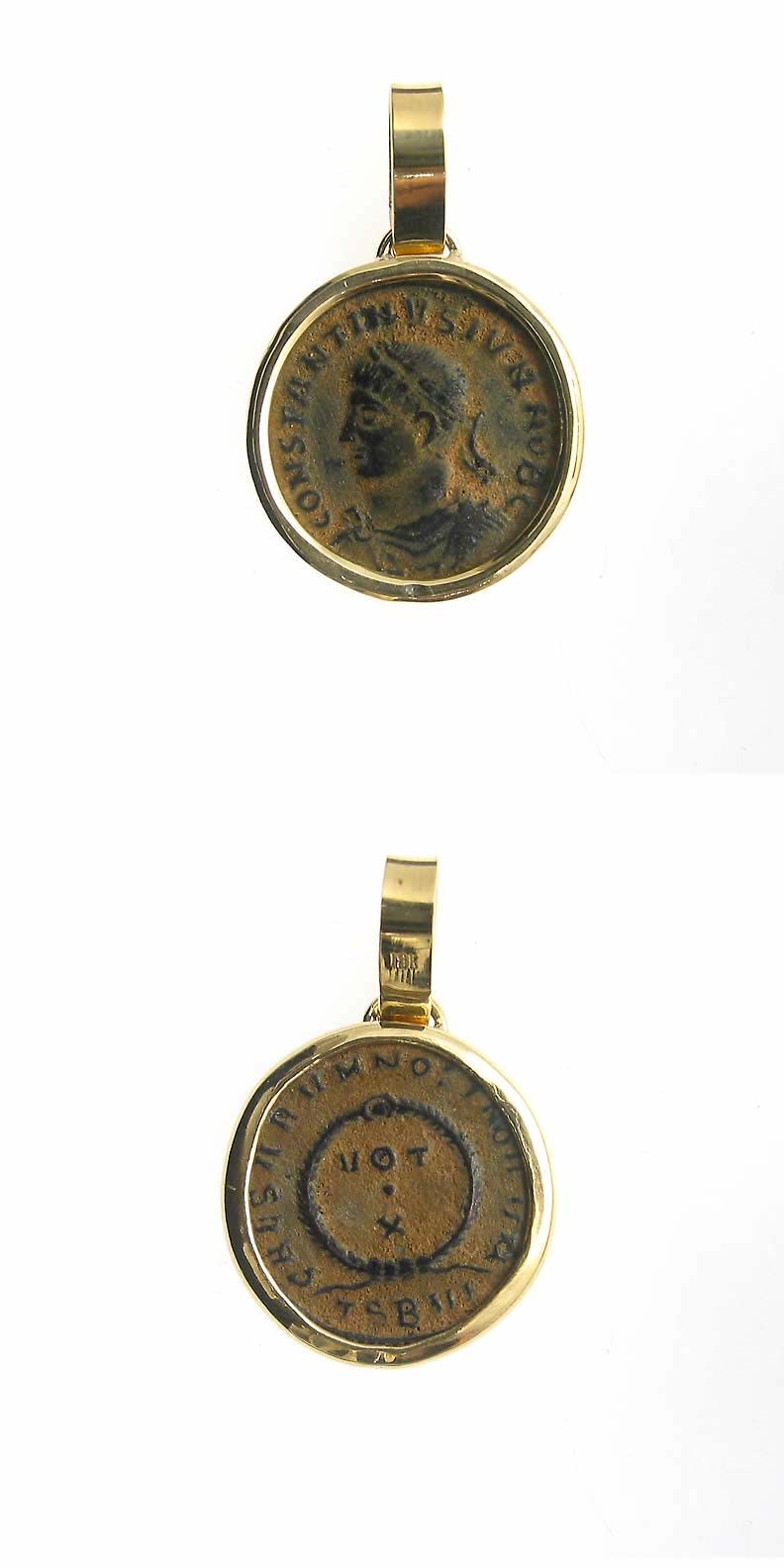Gold Pendant with Bronze Coin of Emperor Constantine II, 337 CE - 340 CE
Bronze and Silver
FJ.7040
Constantine II was born in 316 A.D., the eldest son of Constantine the Great and his second wife, Fausta. When the empire was divided upon the death of his father...
Constantine II was born in 316 A.D., the eldest son of Constantine the Great and his second wife, Fausta. When the empire was divided upon the death of his father in A. D. 337 between him and his brothers Constantius II and Constans I, he inherited Gaul and most of Western Europe. Together with his brothers, Constantine II systematically murdered any of his relatives that he considered a threat to his throne. They left their young cousin Julian alive, however, and Julian ultimately did lead a successful revolt and become emperor. Part of the arrangements made between the three brothers included Constantine II acting as regent for Constans, who was considered somewhat young to rule in his own right. In 340, Constantine II and Constans got into an argument over the administration of Italy. Constantine II gathered an army to go chastise his brother, but was soundly defeated in the battle that took place near the city of Aquileia, in the North of Italy close to the western slopes of the Julian Alps. Constantine II was killed in the battle after bitter fighting.
This stunning pendant evokes the glory and beauty of the early Christian era and its flowering. The rich umber hue of the tarnished bronze is striking when contrasted to the luminosity of the gold mounting. The course of Europe and the world would forever change due to the efforts of Constantine the Great and his sons. There is an eternal splendor to this pendant, a beauty that radiates from within the coin and envelopes the gold setting. To wear this pendant is to evoke the spirit of change. For although time changes and worlds evolve, true beauty and elegance as defined by this pendant are eternal and immune to the fancies and whims of individual tastes.
This stunning pendant evokes the glory and beauty of the early Christian era and its flowering. The rich umber hue of the tarnished bronze is striking when contrasted to the luminosity of the gold mounting. The course of Europe and the world would forever change due to the efforts of Constantine the Great and his sons. There is an eternal splendor to this pendant, a beauty that radiates from within the coin and envelopes the gold setting. To wear this pendant is to evoke the spirit of change. For although time changes and worlds evolve, true beauty and elegance as defined by this pendant are eternal and immune to the fancies and whims of individual tastes.



